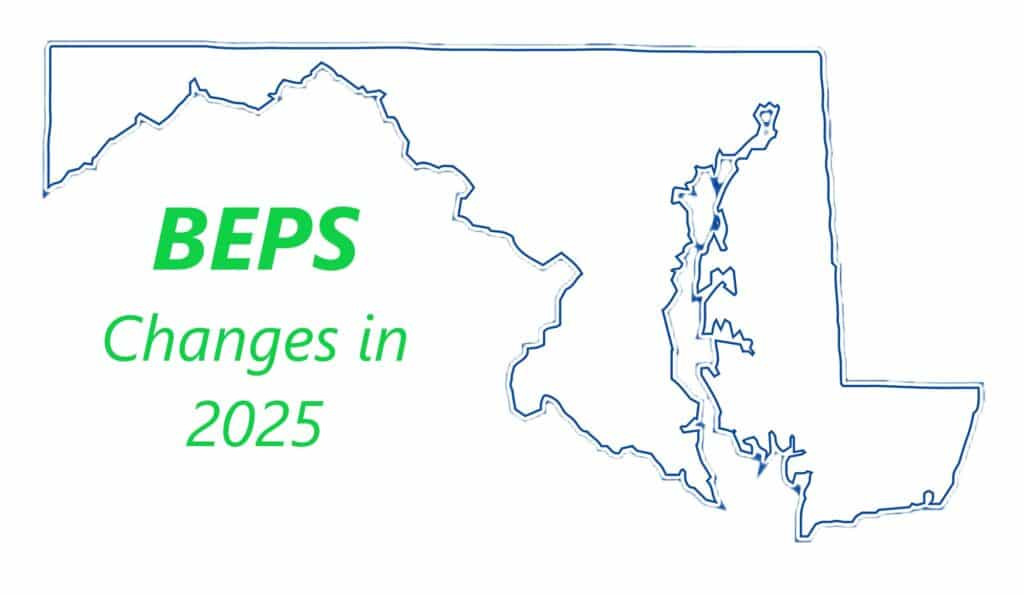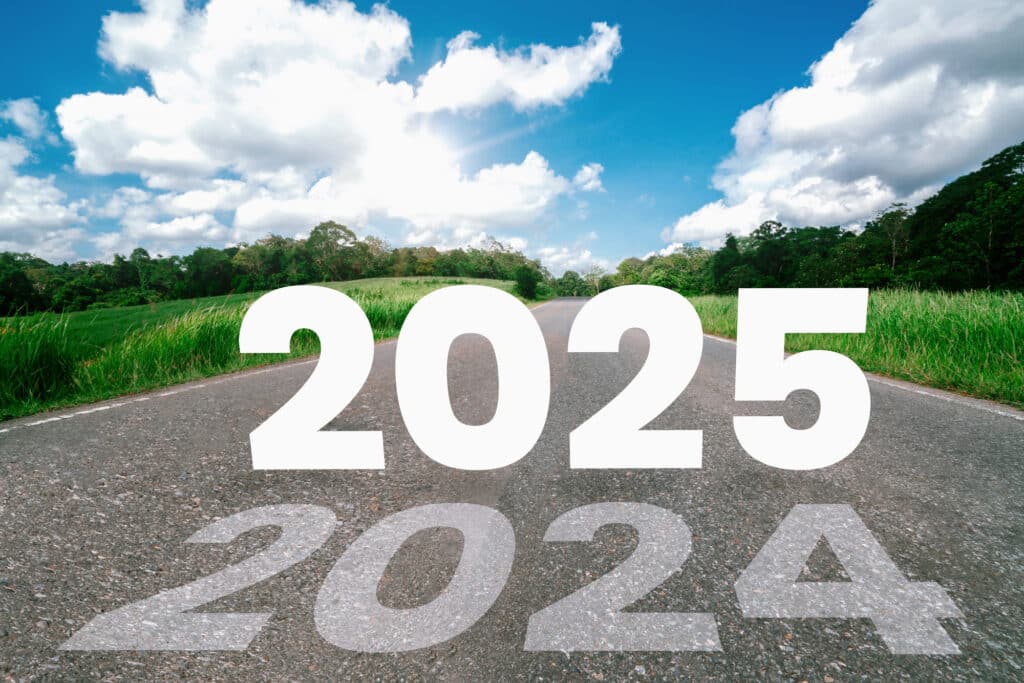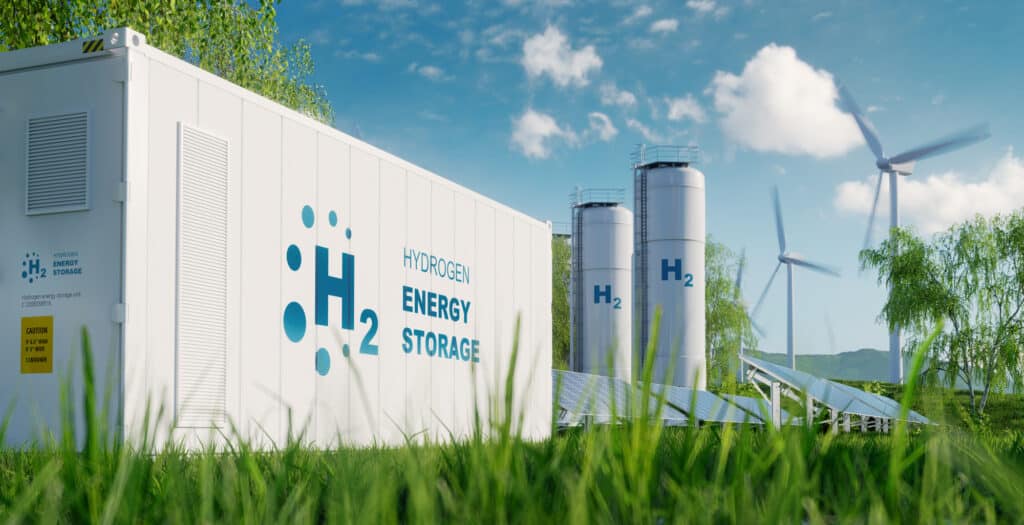Understanding the Importance of Accurate Data Collection in Energy Audits

Accurate data collection is the cornerstone of effective energy audits. Without precise and reliable data, the recommendations and strategies derived from an audit can fall short of their potential, leading to missed opportunities for energy savings and sustainability improvements. In this blog, we’ll explore why accurate data collection is essential…
Upcoming Changes in Maryland Due to the BEPS Benchmarking Program

Maryland is moving forward with major energy efficiency initiatives, and one of the most significant is the Building Energy Performance Standards (BEPS) Benchmarking Program. As part of the Maryland Climate Solutions Now Act of 2022, this program is designed to help the state meet its ambitious climate goals by reducing…
The Future of Energy Auditing: Trends to Watch in 2025

As the world continues its march toward sustainability, energy auditing is taking center stage in efforts to reduce energy consumption and carbon emissions. In 2025, technological advancements, evolving regulations, and growing awareness of energy efficiency are reshaping how energy audits are conducted and implemented. Here are the key trends shaping…
Addressing Peak Energy Demand: Strategies for Load Management

Managing peak energy demand is a critical concern for businesses and organizations striving to reduce costs, increase efficiency, and contribute to a sustainable energy future. Peak demand refers to the times when energy consumption reaches its highest point, often leading to increased utility costs and strain on the grid. Developing…
The Impact of IoT Technology on Energy Management Systems

The Internet of Things (IoT) is revolutionizing many industries, and energy management is no exception. By connecting physical devices and enabling them to communicate and share data, IoT allows energy management systems to optimize energy usage more effectively than ever before. From reducing energy costs to promoting sustainability, IoT is…
Tips for Creating an Effective Corporate Energy Management Plan

In today’s business landscape, managing energy consumption is more important than ever. An effective corporate energy management plan not only reduces costs but also improves operational efficiency and contributes to sustainability efforts. Developing a well-structured plan can be a game-changer for businesses looking to stay competitive while minimizing their environmental…
Innovations in Energy Storage for a Greener Future

As the world increasingly shifts toward renewable energy sources like solar and wind, the need for efficient and reliable storage solutions has never been more critical. These renewable energy sources are inherently intermittent because they don’t produce energy 24/7. To fully harness their potential, innovative storage technologies are essential for…
Energy Management Software: Choosing the Right Solution for Your Organization

In today’s world, energy efficiency is not just an environmental imperative but also a strategic business necessity. Organizations across various sectors are increasingly turning to energy management software (EMS) to monitor, control, and optimize their energy usage. Choosing the right EMS solution is crucial for achieving significant energy savings and…
The Role of Energy Audits in Identifying Energy Efficiency Opportunities

Energy efficiency is no longer just an option but a necessity for businesses and homeowners alike. With the rising cost of energy and increasing environmental concerns, finding ways to reduce energy consumption becomes more important with each passing day. One effective way to uncover these opportunities is through an energy…
Renewable Energy Integration: A Guide for Businesses

As the global push towards sustainability intensifies, businesses are increasingly recognizing the importance of renewable energy integration into their operations. Renewable energy not only reduces carbon footprints but also offers long-term financial benefits through energy cost savings and incentives. Here’s a comprehensive guide for businesses looking to transition to renewable…
Harnessing Smart Technologies for Effective Energy Monitoring and Control

The integration of smart technologies has revolutionized the way we monitor and control energy consumption. From reducing costs to minimizing environmental impact, smart technologies offer benefits for businesses and homeowners alike. Let’s explore the cutting-edge innovations in energy monitoring and control that are shaping the future of sustainability. Real-Time Data…
Implementing Sustainable Energy Practices in Commercial Buildings

As concerns about climate change and environmental sustainability continue to grow, businesses are increasingly turning their attention towards adopting greener practices. Among these initiatives, implementing sustainable energy practices in commercial buildings stands out as a crucial step towards reducing carbon emissions and minimizing environmental impact. From energy-efficient design to renewable…
The Importance of Energy Efficiency in Modern Businesses

In an era where sustainability has become a focal point for both consumers and corporations, the significance of energy efficiency in modern businesses cannot be overstated. Beyond the altruistic drive to reduce environmental impact, energy efficiency is a strategic imperative for companies seeking to improve their bottom line while minimizing…
Ensuring Equitable Access: Empowering Low-Income Households through Federal Home Energy Rebates

In an era marked by a growing awareness of environmental sustainability, federal home energy rebates have emerged as a crucial incentive for homeowners to adopt energy-efficient practices. However, ensuring that the benefits of these rebates reach low-income households remains a challenge. As states navigate the path towards a greener future,…
Building a Sustainable Future: The Role of Low-Carbon Cement in Construction

Construction is a vital component of modern society, but it also has a significant environmental impact, primarily due to the production of traditional cement. Traditional cement manufacturing is responsible for a substantial amount of carbon emissions. However, there’s a promising solution on the horizon: low-carbon cement. In this blog, we’ll…
Why the Electrification of Buildings Will Require a Rethinking of the Electrical Grid

As the world continues to address the urgent need for more sustainable and environmentally friendly practices, the electrification of buildings is gaining momentum. This transition involves shifting away from fossil fuels and embracing electricity as the primary source of power for heating, cooling, and various other energy needs within buildings….
Electrifying the Road Ahead: The Imperative Shift of EV Development to Big Rigs

The automotive industry is at a critical crossroads as the global demand for cleaner and more sustainable transportation solutions continues to grow. While electric vehicles (EVs) have made significant strides in the consumer market, there is a compelling case for vehicle manufacturers to shift their EV development focus to big…
How Rethinking Spread-Out Neighborhoods Can Decrease Municipal Emissions

As the world grapples with the urgent need to combat climate change, it becomes increasingly crucial to explore innovative strategies for smart growth to reduce greenhouse gas emissions. While efforts like transitioning to renewable energy sources and improving public transportation are well-known solutions, there is an often-overlooked aspect that holds…
Building Energy Codes Must Prioritize Reducing Greenhouse Gas Emissions, Not Just Energy

Building energy codes play a pivotal role in shaping the sustainability of our built environment. While energy efficiency has long been a primary focus of these codes, there is a growing recognition that they must also prioritize reducing greenhouse gas (GHG) emissions. In this blog post, we will explore the…
How Electric School Buses Can Decrease Large-Vehicle Emissions

School buses are an important part of ensuring all kids get an education, but they’re also notoriously energy inefficient. As older, diesel school buses rotate out of commission, school districts are increasingly choosing electric school buses to round out their fleets. Here are some ways that electric school buses can…
Are US Cities Reducing Emissions Fast Enough?

For decades, scientists have warned that ever-encroaching climate change will affect the world. Today, experts stress that Earth faces irreversible damage if humans fail to lower planet-heating greenhouse gas emissions. They’ve called for an immediate and wide-scale change to reduce reliance on fossil fuels like oil and gas. Major cities…
How Tenant Energy Bills Signal a Need for Energy Upgrades

As a landlord, you work hard to keep your building in great shape. Your tenants will let you know if there is a problem, such as faulty appliances or pests. But some other aspects of their household might be harder to bring up. You may have to look for areas…
What Is a Carbon Handprint?

Everyone’s heard the term “carbon footprint,” which measures the amount of carbon dioxide an individual, building, or business generates as a result of energy usage and other activities. But there’s a new term: Carbon handprint. This phrase may more accurately describe the environmental impact of businesses and individuals. What Is…
Improving Transportation Emissions Means Looking Beyond EVs

As electric vehicles (EVs) become more widely accessible and inexpensive, more municipalities are turning to them to outfit their police forces, public transportation, and public works departments. They also are investing in the infrastructure necessary to support recharging individual citizens’ vehicles. While these efforts are all well and good, focusing…
3 States Lead the Way in Decarbonizing Buildings

Legislation promoting the use of electric vehicles is becoming commonplace across the country, but plans to decrease the energy output of buildings is less frequent. However, three states recently have enacted legislation aimed at decarbonizing buildings that, hopefully, will chart a course for the rest of the country. Massachusetts On…
Why the Affordable Housing Push Must Include Efficiency Planning

As the cost of housing continues to climb, more and more discussion is being had at the highest levels of the need for more widespread affordable housing. However, as a November report from the American Council for an Energy-Efficient Economy (ACEEE) shows, currently available affordable housing lags in energy efficiency…
The Missing Piece of Municipal Energy Efficiency Efforts: Tracking & Evaluating Data

As more and more municipalities undertake energy efficiency plans, it’s becoming easier to separate the good plans from the not-so-great ones. One of the main things that’s emerging is that a lot of municipalities are skipping out on an essential piece of energy efficiency planning: Tracking and evaluating data. Why…
How Using Upfront and Performance-Based Incentives Can Boost Buy-in for Commercial Energy Retrofits

Getting commercial building owners to undertake pricey energy retrofits can be a struggle. Many owners see only the price on the estimate and dismiss the long-term cost savings and benefits that the project will bring with it. To get the maximum amount of cooperation in energy retrofitting efforts, it’s important…
How Utility Providers Can Use Energy Efficiency to Help Consumers

Across the nation, many states are implementing efficiency goals for utility providers, requiring them to invest certain amounts into new efficiency efforts. At first glance, energy efficiency programs might seem counterintuitive for business. After all, providers sell energy by the kilowatt hour. When consumers use more energy, providers make more…
Why You Should Split Retrofits Into 3 Stages for Maximum Efficiency

Buildings contribute significant energy waste, especially in large and historic cities. Some people may believe the only way to solve this problem is to entirely replace the old buildings with brand new ones. But, in reality, this is an extremely expensive and inefficient option compared to retrofitting. Retrofitting is the…
Are Remote Assessments the Future of Energy Auditing?

Industries have always looked for ways to make work easier and more efficient. Since the invention of the internet, business owners have used digital technology to virtualize elements that don’t need to be completed in person. This trend has only been accelerated by the COVID-19 pandemic. With more people staying…
How Transforming Industrial Clusters Can Help the U.S. Cut Emissions

As a world leader, the U.S. is integral to leading the global fight against climate change. One way that state and local governments can help is by supporting the transformation of industrial centers. Industrial centers are concentrations of companies that specialize in goods or a service in an area. One…
Renewable Energy Isn’t Enough: Why Cities Need to Promote Energy Efficiency

As the threat of climate change looms, cities have begun making changes that help us work toward a solution. One of the most common ways this is done is by investing in renewable energy, such as solar panels and wind farms. Not only are these new facilities great for the…
3 Ways Schools Can Promote Energy Efficiency in Their Buildings

K-12 schools are some of the most important buildings in any community. In addition to educating future generations, schools also serve as community centers. Other purposes they serve might include voting and polling, seminars, music and theater performances, classes for adults, and acting as an emergency shelter. So it makes…
The Missing Piece in Energy Efficiency Plans: Sustainable Transportation

Today, more and more cities are setting strict energy efficiency standards in order to protect the environment and its people. This might include implementing minimum efficiency requirements for buildings and offering financial incentives to support them, for example. While these requirements are a good start for reducing emissions, there is…
3 Ways Focusing on Energy Efficiency When Retrofitting Affordable Housing Can Benefit the U.S.

As the push to retrofit and improve affordable housing continues, one element that cannot be overlooked in plans is promoting energy efficiency. If building owners, municipalities, and even the federal government focus on programs to encourage, fund, and promote energy efficiency improvements alongside other practical improvements to affordable housing, a…
What Is Carbon Pricing, & How Could Its Use Affect U.S. Businesses?

As the push to stem the tide of global climate change increases, countries are exploring more ways to curtail carbon emissions on a grand scale. One of the controls many municipalities across the world have put into place is carbon pricing. While the practice has taken off in places such…
How COVID-19 Has Changed Commercial Retrofitting & How the Push May Impact Energy Usage

The COVID-19 pandemic has changed much about the American way of life, and the way we work is no exception. Even before a large portion of the working population became temporarily remote, the way businesses conceptualized and utilized office space was changing. More companies were embracing hybrid or fully remote…
How California’s New Sustainability Metrics for Energy Efficiency Programs Changes the Benchmarking Landscape

In May 2021, California’s utility regulators approved new rules to reform the state’s energy efficiency policies with a focus on reducing overall carbon emissions. The prior energy savings goals, set in 2019, were just half of what they were in 2015, largely due to unbalanced screening tests. These tests counted…
What Biden’s Infrastructure Plan Could Mean for Energy Efficiency Efforts

President Joe Biden’s infrastructure plan, entitled the Bipartisan Infrastructure Framework, is a $1.2 trillion effort to make an investment in a more sustainable infrastructure future for America. Designed to find a middle ground between Democrats and Republicans, the Bipartisan Infrastructure Framework is designed with sustainability in mind while simultaneously working…
10 Ways Businesses Can Conserve Energy During Hot Summers

Energy is a leading expense for many businesses, especially during the summer months. And with global temperatures showing no signs of stopping their rise, it would seem more hot summer days are on their way in the future. The EPA’s ENERGY STAR program estimates U.S. small businesses collectively spend over…
Strategies Municipalities Can Use to Improve Energy Efficiency

Energy efficiency is important to most cities and towns, and understanding the right paths to take to improve efficiency can be a challenge. Improving efficiency can result in long-term savings and will help municipalities meet local regulations while achieving broader climate change goals for lasting positive impacts. For cities and…
Peak Shaving: What It Is, & How It Can Impact Your Bottom Line

Your business requires a lot of energy. From running lights and computers to powering heavy machinery, it’s very easy for your energy costs to balloon out of control. On any given day, your energy charges will be more expensive during peak hours, while the same amount of energy will cost…
What Are Zero-Energy Buildings, & How Will They Impact Wider Energy Usage?

The energy efficiency world is full of new terms and concepts that can be unfamiliar to the average person. “Building envelope,” “energy audit,” and “renewable energy technologies” are all phrases that, unless you’re part of the energy efficiency movement, may not make any sense. A big term, especially in the…
Is Investing in Solar Energy Right for Your Business?

As the price of traditional utilities has increased and more and more businesses seek to become energy-efficient, installing solar energy options is becoming a choice for many companies. But before you add solar panels to your building’s roof, it’s important to fully investigate whether the cost of investing in solar…
What Biden’s Build Back Better Plan Means for Commercial Energy Efficiency Efforts

As America prepares to transition to a new presidential administration, there also is a lot of speculation about what portions of the Biden administration’s agenda will be implemented. Among the Build Back Better plan – President-elect Joe Biden’s proposal for economic recovery – is a portion regarding energy efficiency measures…
Guidance for Making Buildings More COVID-Safe without Wasting Energy

The COVID-19 pandemic has changed the way businesses operate in both large and small ways. As businesses and buildings are looking to find new ways to get back to business while still protecting people, wave after wave of guidelines have come out. Some of the recommendations, however, aren’t exactly eco-friendly,…
Can Energy Auditing & Management Make Businesses More Successful & Resilient?

An energy auditing and management plan is great for your business’ carbon footprint, but it serves more purposes than just that. A solid energy auditing and management plan also can help make your business more successful and resilient in the face of disaster. Here are 4 ways that can happen:…
How the 2021 International Energy Conservation Code Can Be an Opportunity to Reduce Emissions

Every three years, the International Code Council makes changes to its proposed International Energy Conservation Code to support improved energy efficiency in residential and commercial construction. Once adopted by the ICC voting members, the code is available for states and local jurisdictions to adopt, giving them a starting point for…
6 Ways State Energy Efficiency Mandates Are Impacting Businesses

To help promote a decrease in wasted energy and stem the tide of climate change, many states and municipalities have taken it upon themselves to draw up mandates for energy efficiency in the absence of a national strategy. These energy efficiency mandates and their ambitious goals are impacting businesses of…